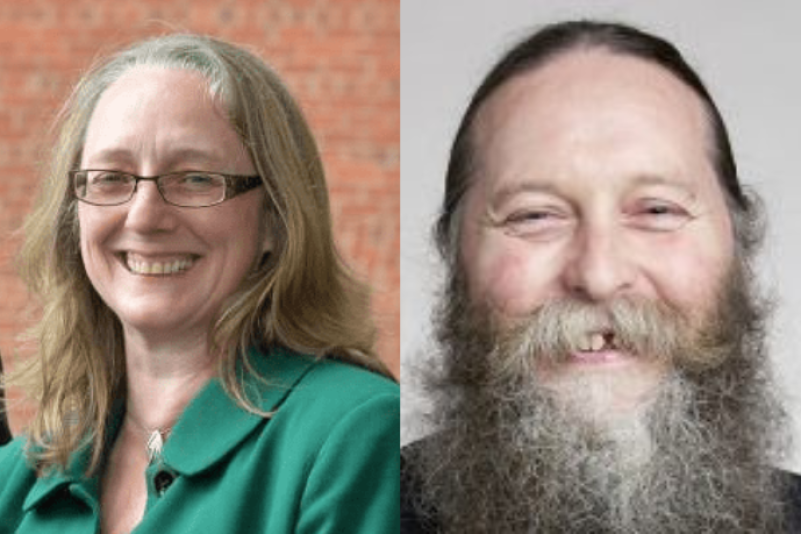Webinar
14 Things We Learned About the Science of Soil Carbon Sequestration with Helaina Black and Pete Smith

This conversation is the ninth instalment in a series of Talking Heads interviews with the LUNZ Soil Health and Carbon Dynamics TAG community. Throughout this series we will explore the key themes that the community will be working on throughout the LUNZ project lifecycle.
In this instalment, TAG lead Ellen Fay (Sustainable Soils Alliance) speaks to soil carbon expert and TAG co-lead Professor Pete Smith (University of Aberdeen), and Helaina Black, Honorary Associate with the James Hutton Institute and chief scientist at Agricarbon, a company that looks at direct measurement to support soil carbon projects.
Key takeaways
- Scientific rigour is paramount. To validate soil carbon claims, scrutinise the study’s methodology, statistics, and funding transparency, not just the headline.
- Methane and soil carbon are separate challenges. Reducing short-lived, potent methane is an “emergency brake” we can use to slow temperature rise quickly, while sequestering carbon in soils is a slow, long-term necessity—both are required for climate goals.
- Terminology matters. Carbon sequestration refers to the natural process whereby carbon is locked up by soils; carbon removal refers to deliberate, human-managed intervention.
- Soils have a carbon saturation/equilibrium point. Carbon-depleted soils have the potential for new sequestration, while high-carbon soils have low capacity to store additional carbon, and for these maintaining carbon stocks must be the priority. Soil carbon storage capacity is a dynamic rather than fixed process – increasing soil carbon requires sustained changes in management.
- “Durability” is a more useful term than “permanence” (which is binary). Soil carbon sequestration timeframes vary by soil type, land management and climate zone. Monitoring soil carbon removals needs to reflect this rather than attempt to operate to rigid time scales. In parallel, there needs to be adequate consideration of preventing long-term losses of soil carbon due to poor management.
- Carbon-neutral beef is misleading. Methane emissions from cattle cannot be offset by existing soil carbon stocks in grasslands (large stocks do not equal large sequestration potential); achieving a carbon-neutral farm requires additional interventions such as tree planting.
- Net Zero tools guide whole-farm emissions reductions, while Monitoring, Verification and Reporting (MRV) tools focus on reporting soil carbon removals for defined areas of land.
- Multiple levels of standards exist (international, national, regional) with a wide array of guidance and methods. For all, however, transparency with documentation is a critical component for assurance around soil carbon removals claims. While standards and guidance are continually improved, a real challenge is with implementation on the ground. Therefore, methods need to be consistent but adaptable to ensure that projects are feasible and affordable as well as robust.
- Scientific research is critical to understanding which management practices could deliver reliable soil carbon removals for different farming systems. While standards provide guidance on how to measure, monitor and verify soil carbon removals claims, continual engagement of the scientific community is essential for providing trusted, practical advice on how to implement, and therefore improve, standards and guidance.
- Models must be integrated with on-the-ground sampling. Models can be used as planning tools to project the long-term potential for soil carbon sequestration, but they must be validated by repeated field measurements, which remain the definitive source of truth for carbon removal claims.
- Modelling can act as a support tool, not as a replacement for field data. Commercial carbon verification projects (Tier 3) demand extensive data, creating a significant and often underestimated burden on farmers.
- Model reliability requires simplicity and transparent documentation of prediction errors. The use of more than one model (called ensemble modelling) can reduce reliance on a single model projection and can help to quantify uncertainty.
- Scope 3 soil carbon removals can be reported via inventory reporting (the difference between a baseline at a specific time point and subsequent resampling events) or intervention reporting (soil carbon removals attributable to a change in management). Intervention reporting requires more information and effort but is also used to deliver incentives associated with specific management practices.
- Farm-level carbon projects produce rich data, but links to national reporting are unclear. Bridging this gap with mechanisms to aggregate project data into national inventories is an urgent policy priority.

Ellen Fay
Soil Health and Carbon Dynamics

Professor Pete Smith
Soil Health and Carbon Dynamics
Subscribe to our Newsletter
A quarterly update of all LUNZ Hub activities, events and news stories.
